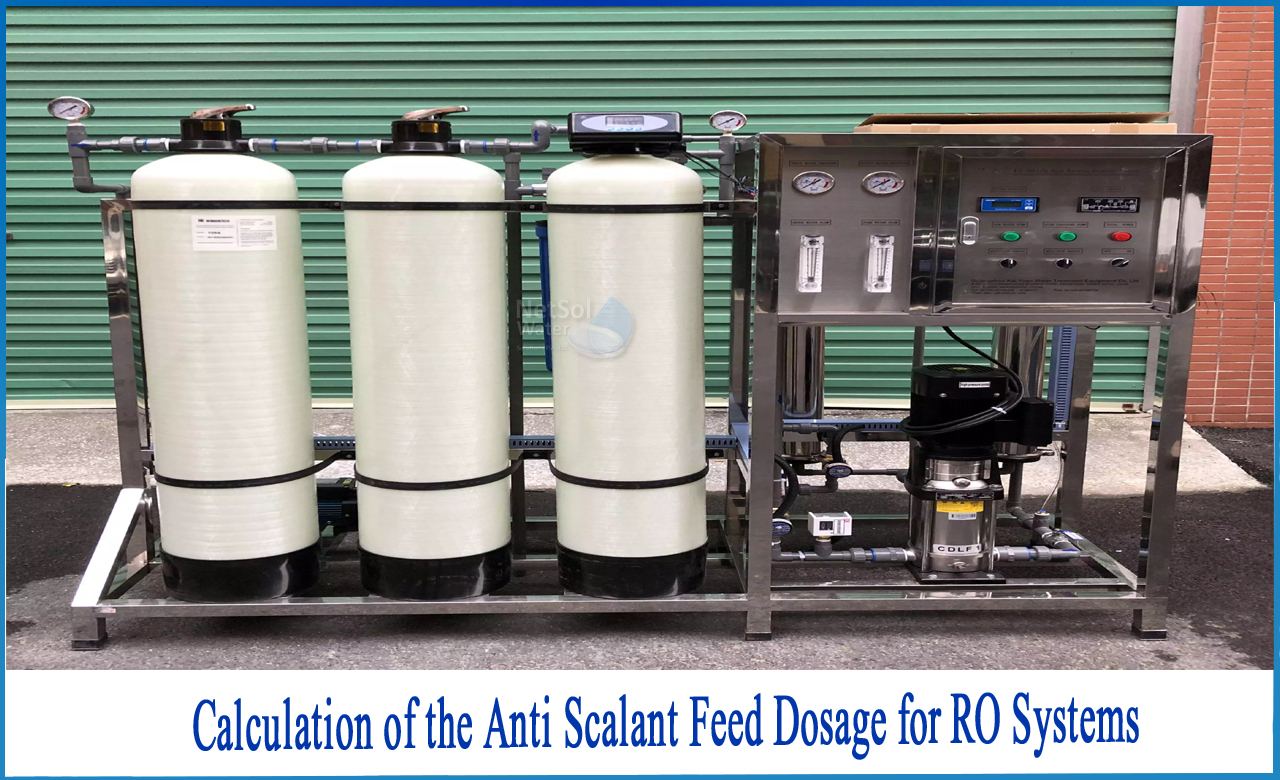What is reverse osmosis antiscalant?
RO anti-scalants are chemicals that are added to the water before it passes through a reverse osmosis membrane system. Mineral scale development on the membrane surface is prevented or slowed by these scale inhibitor compounds.
How do RO Anti-scalants work?
Anti-scalants are pre-treatments that are introduced into the feedwater that passes through the RO membrane to keep it from scaling. When particles accumulate on a membrane, the pores become clogged, causing the membrane to scale.Calcium, barium, strontium, fluoride, and silica compounds have the potential to precipitate in the concentrate or brine channels of reverse osmosis membranes. When the solubility limits of these various salts and silica are exceeded, precipitation ensues.
How are scale deposits formed in Reverse Osmosis (RO) systems?
Because the solvent (pure water) is being transported through the membrane, which acts as a barrier to the salts, the salt concentration on the brine side of the membrane increases as pure water is forced through the membrane under pressure. The least soluble salts will begin to generate micronuclei particles as the salt concentration rises.
These eventually mix to form salt crystals that are insoluble. If these crystals are allowed to grow unchecked, scale deposits will form on the reverse osmosis membrane surface. Excessive scale build-up causes the RO membrane element to lose efficiency due to increased polarisation or, in the worst-case scenario, plugs the membrane channels.
Getting rid of scale formations
A specifically prepared organic polymer (scale-inhibitor) is introduced into the raw water stream to prevent mineral scale formation. This polymer will aid in the dispersal of suspended matter in the raw feed water stream, the alteration of mineral scale crystal growth (morphology), and the sequestration (chelation) of micro-nuclei to prevent crystal growth.
Determination of the amount of required Anti-Scalant
The concentration of various elements in the brine (concentrate or reject) solution determines the amount of scale inhibitor required to avoid scale development in the Reverse Osmosis membrane. The amount of scale inhibitor required varies by site and is determined by feed flow, raw water analysis, and computer-generated design projections for the Reverse Osmosis membrane in use. A scale inhibitor/dispersant dosage rate of 2 - 5 milligrams per litre (mg/L) is commonly used.
How to Calculate of the Anti Scalant Feed Dosage for RO Systems?
For sample calculations we'll make the following assumption in order to properly do these calculations_
Feed Flow: 520 gpm.
Specified Dose: 2.21 mg/l neat solution (provided by chemical supplier)
Anti-Scalant Density: 10.3 lb/gallon
520 gal/min * 1440 min/day = 748,800 gal/day
2.21 mg/l (ppm) * 8.345 min/day * 748,800/1,000,000 = 13.80 lb/day
13.80 lb/day / 10.3 lb/gal = 1.34 gal/day per train
1.34 lb/day * 3789 ml/gal = 5080.09 ml/day
5080.09 ml/day / 1440 min/day = 3.52 ml/min
As a result, for this example, your dosage should be set at 3.52 ml/min on the dosing pump.
What are the various Pump Parameters?
1: After diluting the scale inhibitor solution, the feed pumping rate must be set. Adjust the stroke length and/or stroke frequency (speed) knobs on the chemical feed pump face to achieve this. To aid the operator in making the necessary stroke/frequency adjustments, a graduated cylinder should be employed.
2: This is accomplished by setting the motor VFD speed and the capacity control (stroke) knob on the chemical feed pump face. The operator can use a calibration column to help make the necessary stroke/speed changes.
3: Pour 100 mL of scale inhibitor solution into the calibration column. Close the suction valve on the Scale Inhibitor pump and open the valve on the calibration column. The solution in the calibration column is now the pump's feed source. The column is set up so that the suction to the chemical pump from the calibrated flow column is flooded, eliminating the need for priming. Measure the change in volume of the calibration column over a one-minute period while Reverse Osmosis train is running. Turn the pump capacity control knob clockwise (to increase) or counter-clockwise (to reduce) to change the pumping rate (to decrease).
4: The scale inhibitor pump should be calibrated at least once a week to ensure proper dose of the scale inhibitor solution. The process outlined above is for the initial calibration of the pump.
Contact Netsol Water immediately if you have any questions concerning build-ups in your Reverse Osmosis Systems or would want to talk with one of our experts. We'll gladly assist you in any way we can!
For further inquiries or product-purchase-related questions, give us a call on +91-9650608473 or email at enquiry@netsolwater.com



